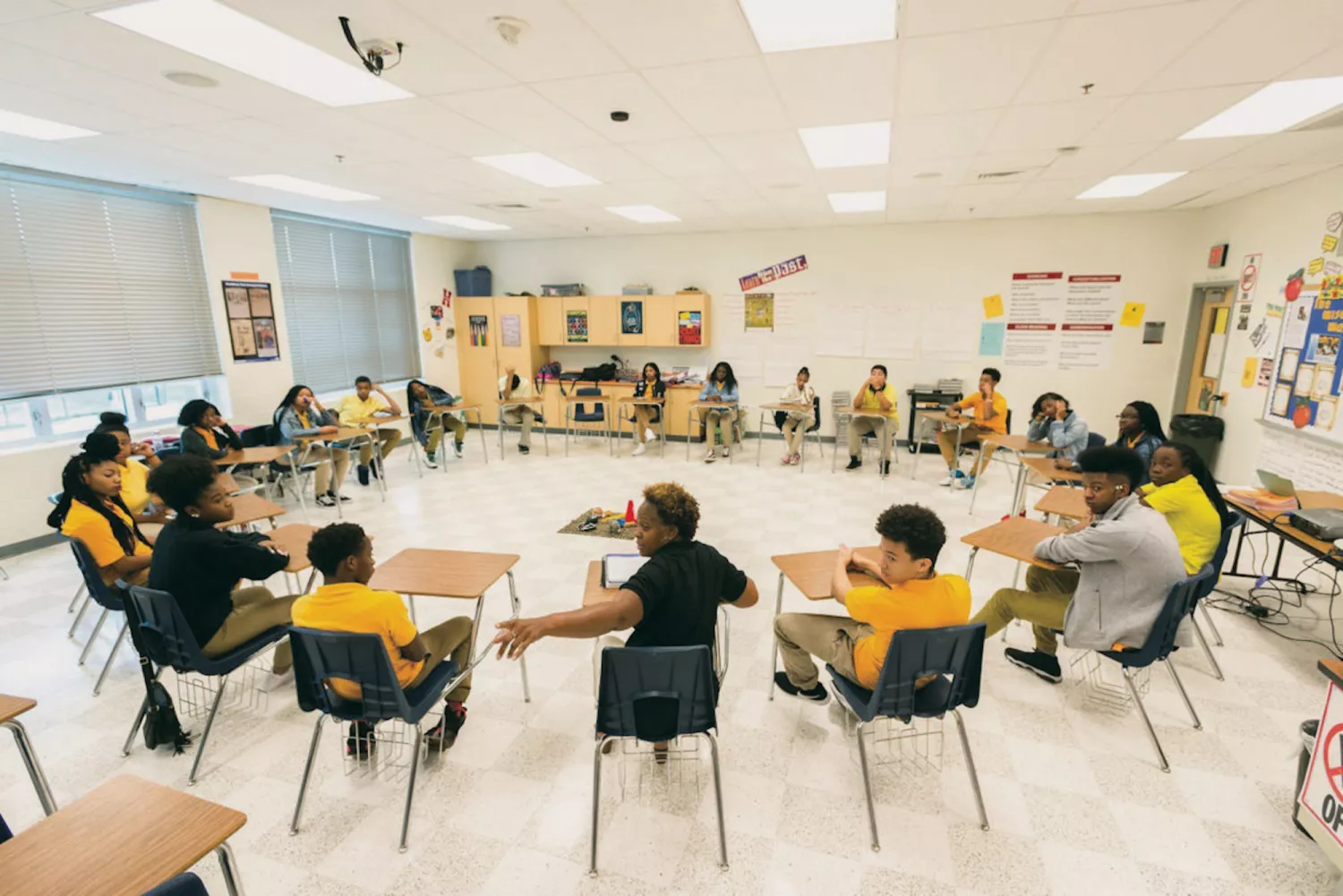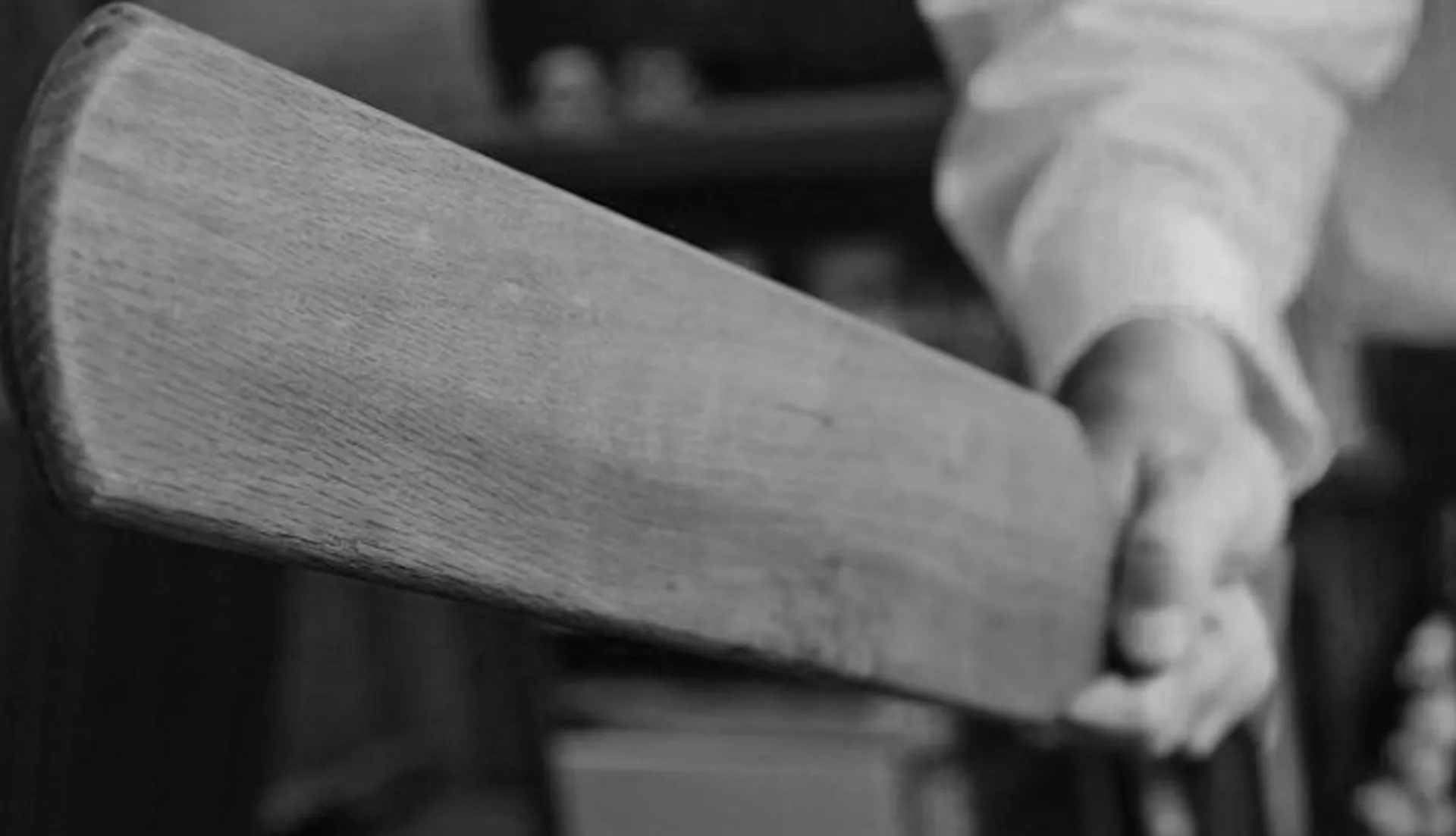Key Takeaways
- Twenty-three states either still allow, or haven't officially banned, corporal punishment to discipline children in public schools. Black students are four times more likely than white students to experience this type of punishment.
- Research shows hitting kids causes mental health and emotional problems, injuries, and undermines academic achievement.
- Restorative justice has been found to help provide a positive and effective alternative to harsh discipline practices.
In 1992, Robin McNair was in her first year of teaching—the first and only time she ever paddled a student.
She says she vaguely recalls her reasoning for paddling the fifth grader.
“I don’t even remember what he did, but I don’t think he did anything drastic. As I think about it, I wonder why I thought doing this would stop him from being a child,” she says.
McNair had also been paddled as a student. For her, punitive measures were the only way for students to comply.
“I was an advocate for removing students from the classroom and other punitive measures. I used to blame and shame my students when they did something wrong,” McNair says.
Now, over 25 years later, the restorative justice coordinator in Prince George’s County, Maryland, works to advocate against corporal punishment and other punitive measures in schools.
Where Corporal Punishment Still Exists
In March 2023, U.S. Secretary of Education Miguel Cardona penned a letter to administrators and policymakers calling for the ban of corporal punishment in education settings.
“Unfortunately, some schools continue to put the mental and physical well-being of students at risk by implementing the practice of corporal punishment,” said Cardona. “Corporal punishment can lead to serious physical pain and injury. It is also associated with higher rates of mental health issues.”
The U.S. Department of Education defines corporal punishment as “paddling, spanking, or other forms of physical punishment imposed on a child.” Corporal punishment has been banned in most states since the mid-1990s and the number of students experiencing the punishment has dropped over the past decade. But the practice remains on the books in a stubbornly high number of states.

As of 2024, corporal punishment is legal in 17 states and practiced in 14. An additional six other states have not expressly prohibited it. (Several members of Congress have tried to prohibit corporal punishment in schools. In May 2023, Sen. Murphy, Christopher (D-CT) introduced the Protecting our Students Act to outlaw the practice of corporal punishments in schools receiving federal funding.)
During the 2017-18 school year, roughly 69,000 students received corporal punishment, down from 107,000 in 2013. The most recent number available—about 20,000 students in 2020-21—is much lower because in-person instruction and data reporting were disrupted during the pandemic.
All this despite major public health organizations calling for an outright ban of corporal punishment in schools.
The World Health Organization classified corporal punishment as “a violation of children’s rights to respect for physical integrity and human dignity, health, development, education and freedom from torture and other cruel, inhuman or degrading treatment or punishment.”
In August 2023, The American Academy of Pediatrics called for corporal punishment to be banned in school settings and that it be replaced with other practices to support student behavior.
The Impact on Students
Proponents of corporal punishment argue that inflicting pain upon a child acts as a deterrent for misbehavior and helps instill discipline.
However, research clearly shows that schools that have utilized physical forms of discipline have not been as successful at correcting unwanted behavior as schools that do not use corporal punishment. Studies also have shown that students who are victims of corporal punishment are more likely to exhibit aggression, anxiety, and depression. “No evidence exists that removing corporal punishment from schools creates a statewide permissive environment where youth fail to control their behavior,” wrote Elizabeth Gershoff of the University of Texas in 2012.
“The practice of corporal punishment is antithetical to positive child and adolescent development and school safety. Schools should be safe places where all students and educators interact in positive ways that foster students' growth, belonging, and dignity—not places that teach or exacerbate violence and fear.” - U.S. Education Secretary Miguel Cardona
And corporal punishment has significant negative effects on students' overall mental wellbeing and can lead to serious physical injury. In 2003, the Society for Adolescent Medicine estimated that between 10,000 and 20,000 students require medical attention as a result of school corporal punishment each year.
Students who have experienced this punishment are also more likely to feel alienated from their school, which can be detrimental to academic achievement. “It sends a message to students that we don’t value them enough to work through things the right way,” McNair says.
The practice helps perpetuate a cycle of violence, Cardona said in his letter to school leaders. “Corporal punishment may impress upon students who are subjected to this practice—directly and indirectly—that violence is an acceptable means of problem-solving and conflict resolution, as research shows that the practice is associated with future incidents of domestic violence," he wrote.
Who’s Being Hit the Most?
Nationwide, Black students and students with disabilities are twice as likely to receive corporal punishment in school as white students without disabilities. Boys are four times more likely to be hit than girls. The majority of students who received corporal punishment were in Mississippi, Alabama, Arkansas, and Texas.
The violence Black students and disabled students face within education has shown to be connected to a longer history of racism in the United States. A 2021 study found that states with higher uses of corporal punishment also had long histories of lynching.
Mississippi formerly led the highest number of lynchings in the nation from 1882 to 1968, according to the NAACP. Presently, Mississippi schools corporally punish their children the most.
“This country was founded on punishment as a way of dealing with things. Corporal punishment, incarceration, and enslavement are all baked into our society. It’s automatic to think of punishment when someone breaks the rules,” says David Yusem, a restorative justice coordinator for Oakland Unified School District.
Yusem believes corporal punishment does not teach children about their misbehaviors, instead it just instills fear.

An Alternative, Not a Solution
Rather than resorting to punitive and often violent measures as forms of discipline, educators like McNair and Yusem have embraced restorative justices, which emphasizes the importance of cultivating a positive and safe learning environment.
Restorative justice approaches have been found to help provide a positive, effective alternative to harsher discipline practices.
“We get educators to think about the purpose and importance of restorative justice," McNair explains. "We train them to think about how they talk to students and interact with them. Then we move on to what happens when harm takes place.”
However, Yusem, who began his career in restorative justice 13 years ago, in Oakland, Calif., after a career in conflict resolution, says his mindset and motivation behind restorative justice has shifted. He previously believed that restorative justice would be the solution to mending the gaps within education.
“I used to think that if everyone just implemented restorative justice, naturally racial disparities would be eliminated because it's culturally responsive and inclusive,” Yusem says.
He soon discovered that it was not enough.
While restorative practices have been implemented in California classrooms, Black students remain about three times more likely to be suspended, more than any other racial group, according to a report for the 2018-2019 academic year.
And though suspensions have decreased overall, Black students still lead those numbers.
“We have to be more intentional,” Yusem says. “Restorative justice alone is not going to make the changes that we need to see. It can be helpful as a process and philosophy, but there needs to be other strategies in place.”






